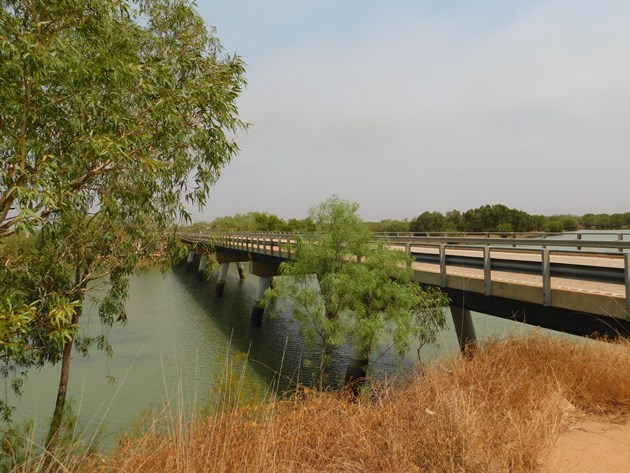
When you travel north along the highway from Broome towards Willare and Derby you come to a wide bridge with a sign that says “Cockatoo Creek”. I would highly recommend that you pull up on the right after you have crossed the bridge and park where the plaque is for the official opening of it. There are still a few single lane bridges around the Kimberley and this bridge offers an area where you can easily birdwatch the water below. We always make a point of stopping and we are never disappointed. We have observed huge flocks of Galahs there on previous visits and other times there are more bird species, but only one or two of each species. Last Sunday we stopped as usual and we were able to observe a good selection of birds from the bridge. Crocodiles are easily observed in the area too, so if you have got this far without seeing one then it is worth a stop!
As soon as you get out of your vehicle you can hear birds at this location. It does not take much water to sustain a good variety of birds and if the trees are in flower you will be rewarded even more. We immediately observed that the sky was full of Fairy Martins and they appeared to be nesting under the bridge. The sky is hazy around the Kimberley at the moment due to bushfires as we await our wet season rain.
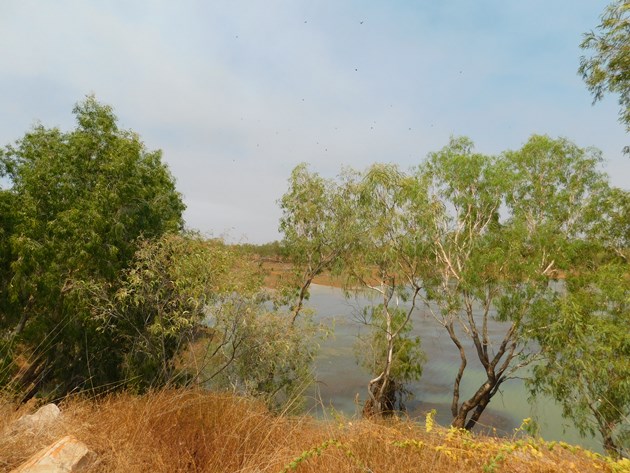
Fairy Martins fill the sky
The surrounding trees were noisy with Little Corellas, Black-faced Cuckoo-shrikes, Little Friarbirds, Grey-crowned Babblers, White-winged Trillers, Paperbark Flycatchers, Rufous-throated Honeyeaters, Magpie-larks, Willie Wagtails and White-breasted Woodswallows. Whistling Kites and Black Kites were active in the area too due to the nearby fire and we observed a Brown Falcon perched in a nearby tree.
Walking out onto the bridge we soon observed a good mixture of other bird species. Brolga had come into drink and there were all three species of Ibis present. We don’t always have White Ibis, Glossy Ibis and Straw-necked Ibis all together in one location. A Royal Spoonbill appeared to be well for food around the White-necked Heron and there was also a lone White-faced Heron feeding nearby.
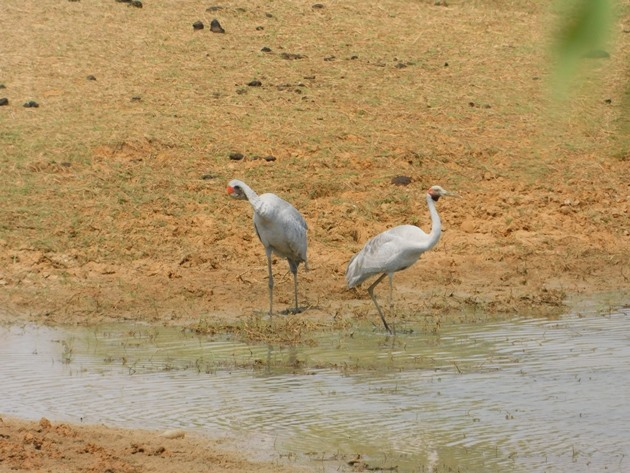
Brolga
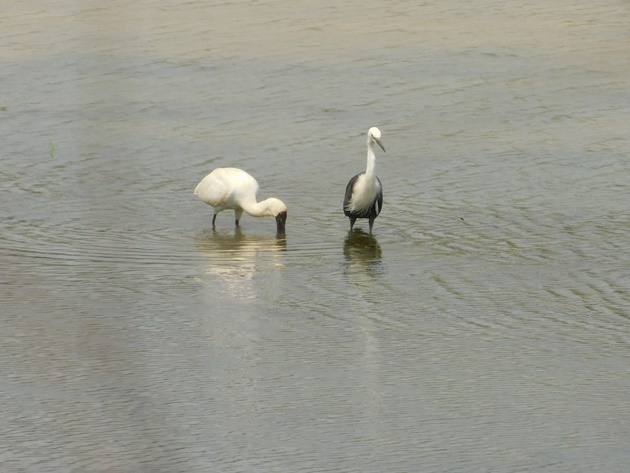
Royal Spoonbill and White-necked Heron
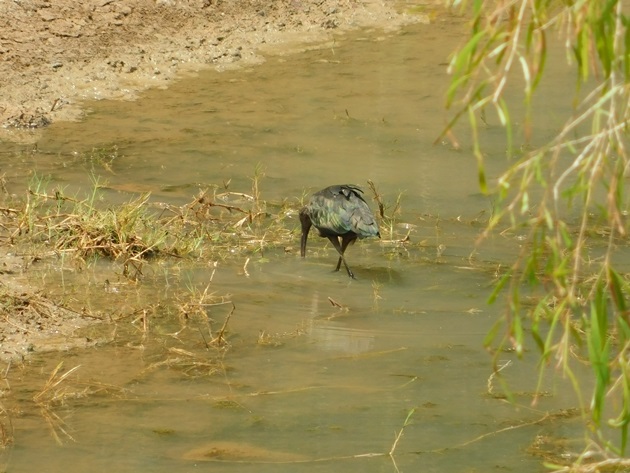
Glossy Ibis
There were several ducks around the water body and they included Pacific Black Ducks, Plumed Whistling-Ducks and Wandering Whistling-Ducks. There were also Australasian Darters and Little Pied Cormorants. The egret family were represented by the Great Egrets, Intermediate Egrets and a lone Cattle Egret. There was also a Black-necked Stork.
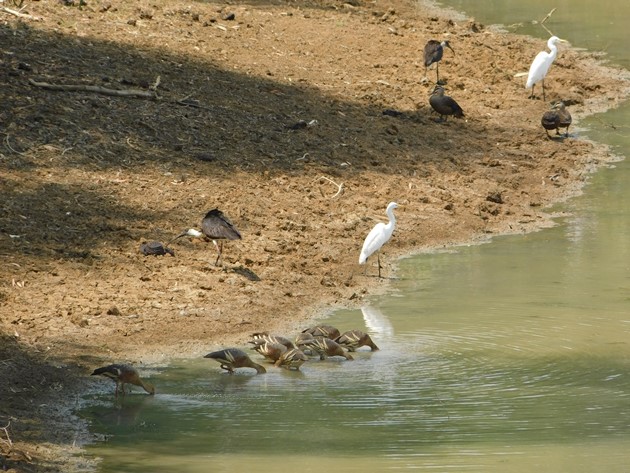
Ducks, Ibis and Egrets
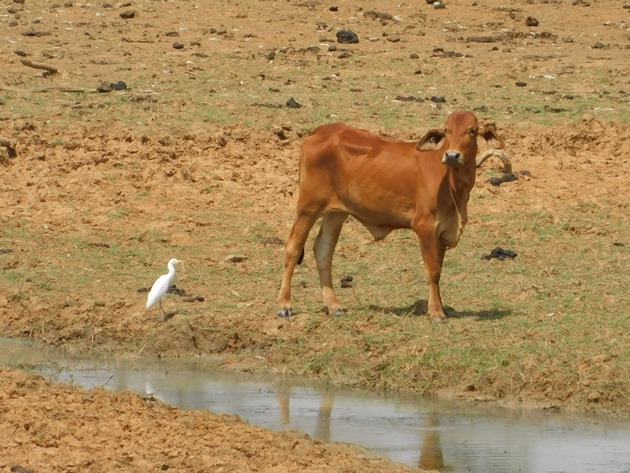
Cattle Egret
Looking closely around the edge of the water body we soon observed Black-fronted Dotterels, Wood Sandpipers, Black-winged Stilt and Masked Lapwings. Whiskered Terns were feeding at the water body as well. There is a small dam on the other side of the road and that soon added a few more species to the list.
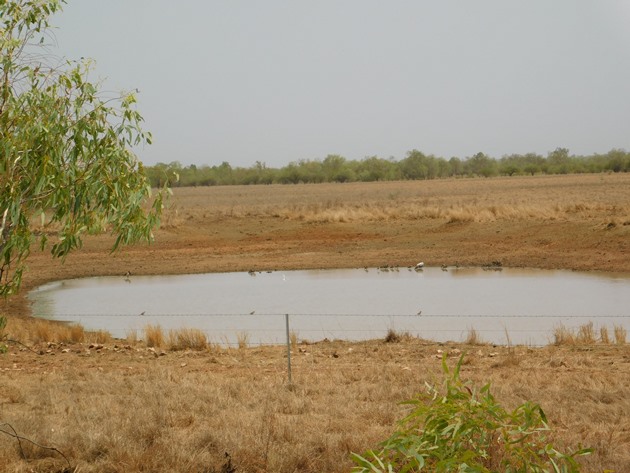
Small dam at Cockatoo Creek
If you look closely at the above photo you will see one odd bird to the left and several birds on the barbed wire. It is a lone Magpie Goose and several Horsfield’s Bushlarks.
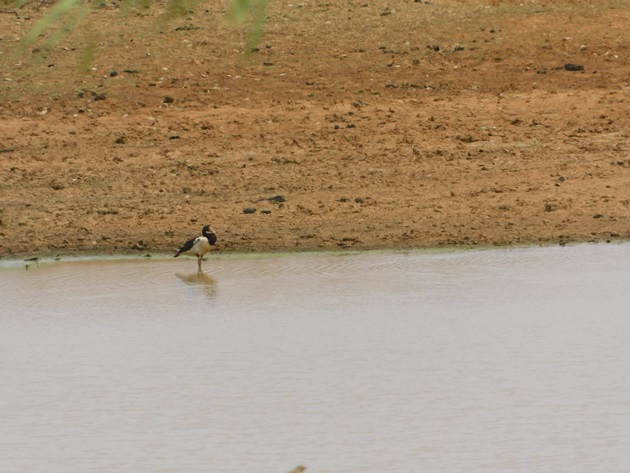
Magpie Goose
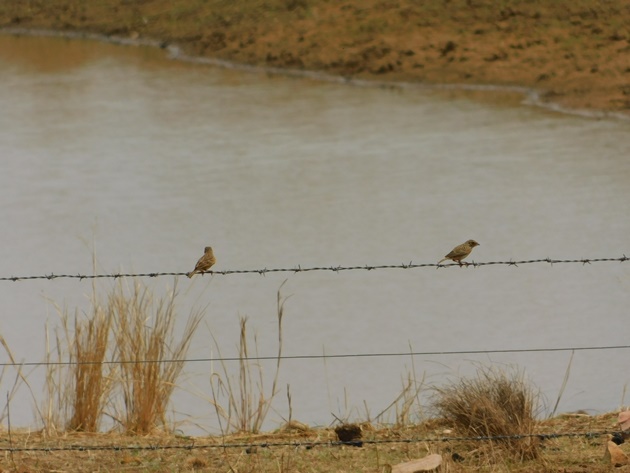
Horsfield’s Bushlarks
The highlight of the brief stop was seeing not just Zebra Finch dripping down to drink at the dam, but also Star Finch. They were our first Star Finch for 2021, because we are hesitant about going too far from home under the current Covid restrictions.
Although we are unlikely to be able to move freely this year beyond Western Australia we are lucky that we have an excellent variety of bird species in the local area. We have observed the arrival of the Dollarbirds, Channel-billed Cuckoos, a male Pacific Koel, which is a rare visitor to Broome nowadays and of course all of the migratory shorebirds. Soon we will receive our much needed wet season rain in town, but for now you need to travel inland a little to get wet!
Updated January 2023…..
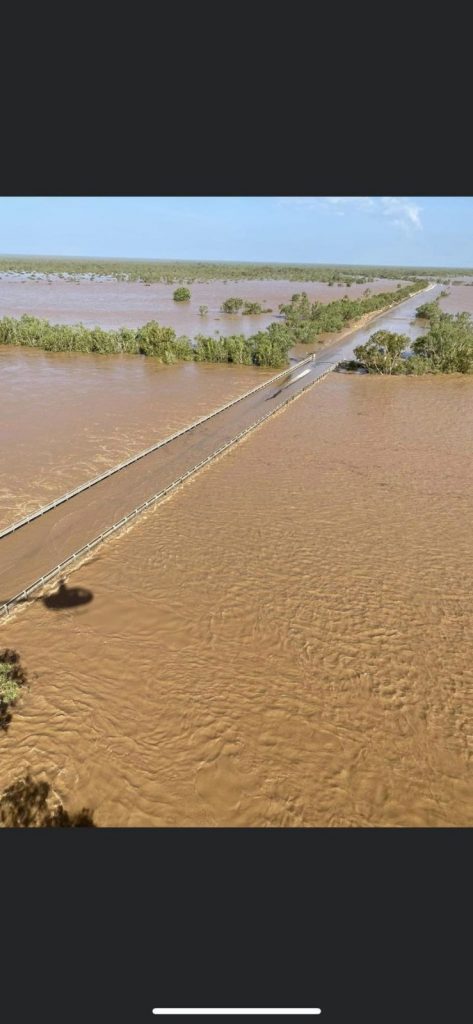
Cockatoo Creek is underwater
Refer to the Main Roads website for road closures around Western Australia, in particular the Kimberley region.
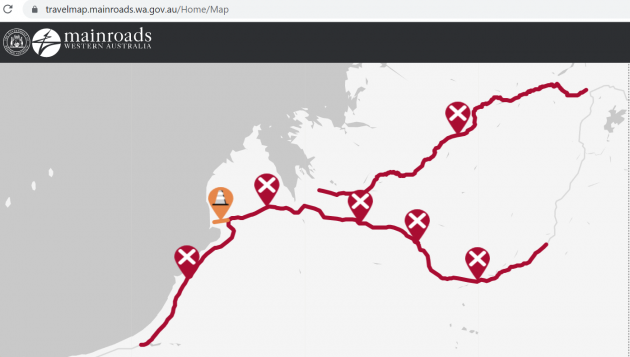
Kimberley highway closures January 10th 2023
We can expect this one and only highway around Australia to be closed for some months due to bridges being washed away in our recent floods.













Excellent , I want to travel Europe to watch Birds .
I was telling someone today that I was part of 18. built this bridge and one over ski lake in 1984.
6 months after it was opened by an appropriate minister all the approach roads were washed away by violent flood.
I look forward to returning and taking your advice on the bird watching spot.
Actually wondering how the roads have stood up to the latest flood.
Hi Neil,
I have just updated the blog with the current situation-flooded! The main bridge at Fitzroy Crossing has been badly damaged and will need replacing and the bridge at Willare may well be the same. Once the water levels go down there’s a big task ahead.